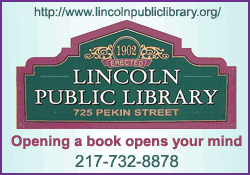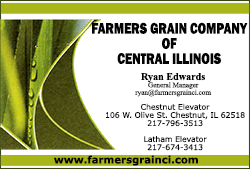|
In rural-urban divide, U.S. voters are
worlds apart
 Send a link to a friend
Send a link to a friend
 [November 12, 2016]
By Nick Carey [November 12, 2016]
By Nick Carey
JANESVILLE, Wisc. (Reuters) - Semi-retired
Wisconsin pig farmer John Lader does not think much of Donald Trump as a
messenger, but voted for what he described as the Republican
president-elect's message of change and economic hope for America.
"The last few years, there hasn't been much optimism and hope among
working people in rural areas in this country," said Lader, 65, who
lives in the farmland outside the southern Wisconsin city of Janesville.
Around 65 miles (105 km) to the northeast in the state's biggest city of
Milwaukee, Jose Boni, who cleans offices at a local university and rents
out several homes, heard a different message: Trump's plan to build a
wall on the U.S.-Mexican border and vow to deport the estimated 11
million immigrants who are in the United States illegally, most of whom
are Hispanic.
"He doesn't care about our community or working people, he only cares
about himself," said Boni, 57, an Ecuador-born U.S. citizen.
The different worlds of Lader and Boni help illustrate the rural-urban
divide that was critical to the outcome of Tuesday's U.S. presidential
election.
A country once defined by regional voting now is more clearly divided by
the differences between rural and urban voters. The combination of a
strong Trump turnout in the countryside and a weak showing by Democrat
Clinton in the cities went a long way toward deciding the election.

Rural and small-town working-class white voters, who already tended to
vote Republican, propelled Trump. Urban areas, where black and Hispanic
voters are concentrated along with college-educated voters, already
leaned toward the Democrats, but Clinton did not get the turnout from
these groups that she needed. For instance, black voters did not show up
in the same numbers they did for Barack Obama, the first black
president, in 2008 and 2012.
Trump beat Clinton by 26 percentage points among voters who live in
non-metropolitan areas, while Clinton bested Trump by about 7 percentage
points in urban areas, according to the nationwide Reuters/Ipsos
national Election Day poll.
'THE PERFECT SLOGAN'
Steven Schier, a political science professor at Carleton College in
Northfield, Minnesota, said rural voters "feel they've lost something,
that America is moving away from them."
"Trump came up with the perfect slogan for them in 'Make America Great
Again' because it hits them exactly where they live," Schier said.
Democratic presidential candidates had won in Wisconsin in every
election since 1988, until Trump's victory on Tuesday.
In Wisconsin, overall turnout was lower than in the 2012 presidential
election. Trump actually was a few hundred votes shy of 2012 Republican
nominee Mitt Romney's total in the state, but Clinton was around 240,000
votes short of Obama's 2012 tally. She ended up around 24,000 votes
behind Trump in the state.
"Those couple hundred thousand Democratic voters for whatever reason
decided not to vote," Mordecai Lee, a political scientist at the
University of Wisconsin-Milwaukee. "They stayed home, and Wisconsin went
Republican. I think that was the pattern around the country."
Turnout in Milwaukee's Hispanic neighborhoods was down 9 percent versus
2012, while citywide turnout in Milwaukee fell 14 percent.
[to top of second column] |

Voters cast their votes during the U.S. presidential election in
Elyria, Ohio, U.S. November 8, 2016. REUTERS/Aaron Josefczyk/File
Photo

Clinton took 65.6 percent in Milwaukee County, which includes the
city, to Trump's 28.6 percent. But Trump won in rural counties, for
example taking 59.9 percent to Clinton's 33.6 percent in Fond du Lac
County in the middle of the state and 71.4 percent to 25.1 percent
in Florence County in the far north.
In Milwaukee, Election Day canvassers found Trump's comments about
immigrants were not enough to get people to the polls. Christine
Neumann-Ortiz, director of community group Voces De La Frontera,
said about 15 percent of the voters reached by the group in
Milwaukee raised concerns about Clinton's use of a private email
server while secretary of state or were undecided.
"If we reached people, we were able to convince them to vote, but I
don't think we could ever have reached enough by ourselves to
overcome Trump's advantage with white working-class voters,"
Neumann-Ortiz said.
The rural landscape was rich Trump territory, with people concerned
about a slump in commodity prices and layoffs among manufacturers.
Rural areas, especially in the Midwest and Northeast, have also seen
a demographic shift in recent years with the arrival of Hispanic
immigrants.
Demographer William Frey of the Brookings Institution think tank in
Washington said census data from 2008 to 2015 showed Hispanic
populations in non-metro counties in the Midwest rose 18 percent
while the white population fell 9 percent.
The counties still are 84 percent white, but those voters are
feeling the change, Frey said.
"They're a little bit fearful of it, and if they're being hit hard
economically, that can add to it," Frey added.
Austin Arndt, a beef cattle farmer and neighbor of John Lader
outside Janesville, hometown of Republican speaker of the U.S. House
of Representatives Paul Ryan, said his vote was more against Clinton
than for Trump.

He said his vote was based on Trump's promise to cut taxes and
repeal Obama's signature 2010 healthcare law, which has enabled
millions of previously uninsured Americans to gain medical coverage
but is detested by conservatives as a government overreach.
"From the social point of view as candidates, they were both
terrible people," said Arndt, 33. "For me, it was all about the
economics."
(Reporting by Nick Carey; Editing by Will Dunham)
[© 2016 Thomson Reuters. All rights
reserved.]
Copyright 2016 Reuters. All rights reserved. This material may not be published,
broadcast, rewritten or redistributed. |